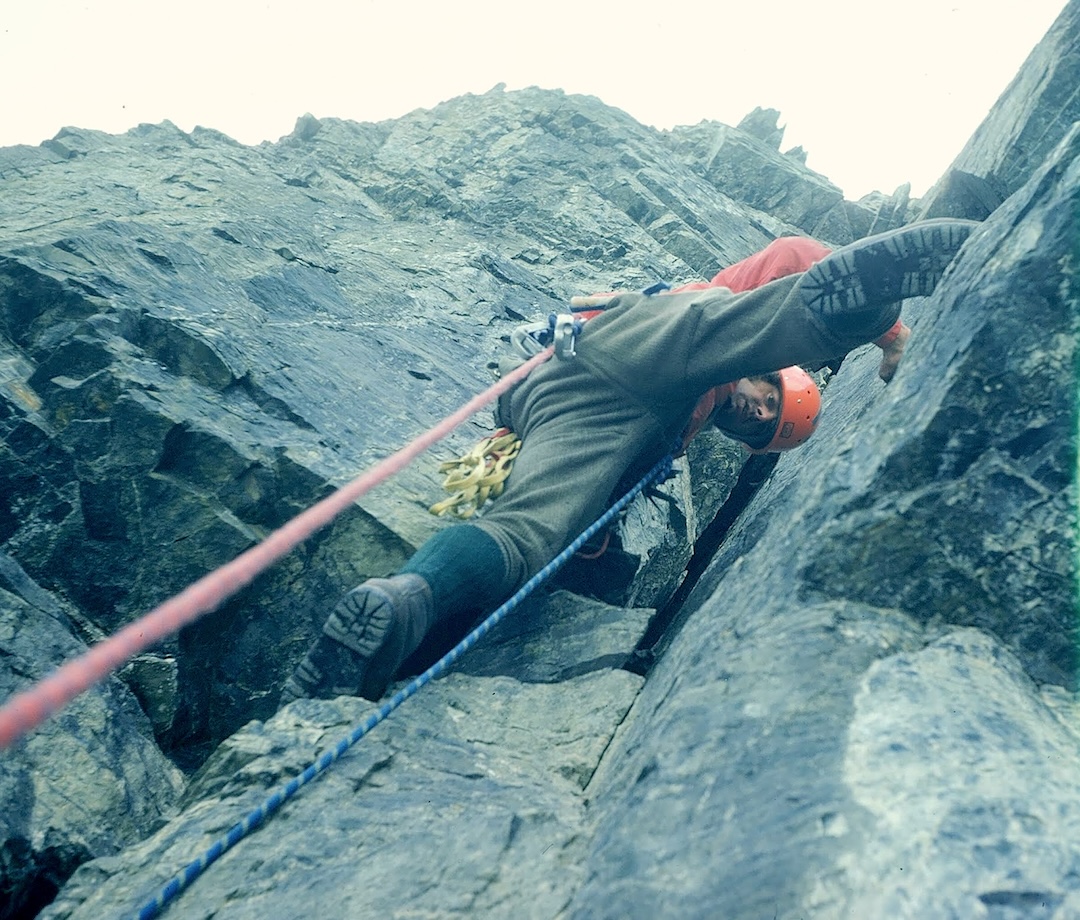Chris Jones, 1939–2024

During his and Chris Jones’s fifth night on the 5,000-foot north face of North Twin in the Canadian Rockies, George Lowe’s mind raced, aware the two might not be able to go up or down.
At 3 a.m., as Lowe wrote later, Chris asked, “Are you awake?”
“Of course!” Lowe said.
Lowe’s account in the 1975 AAJ continued: “We are overdue tomorrow. Rescue? Chris talks of people who waited and perished. The basic toughness in him that is so critical in a climbing companion comes out. We will keep going until we are absolutely stopped.”
The pair did only two major climbing trips together, but one of these—to North Twin in 1974—resulted in an enormous milestone in alpinism. Another trip, in 1973, included the Supercouloir on the north face of Deltaform in the Canadian Rockies and the first ascent of the south face of the Devils Thumb in Alaska. Jones already had climbed many big faces in the Rockies: He established new routes on the north faces of Mt. Assiniboine and Mt. Edith Cavell, in 1967, with Yvon Chouinard and Joe Faint; the north ridge of Mt. Columbia with Gray Thompson, in 1970; and the north face of Kitchener, with Thompson and Jeff Lowe, in 1971.
The north face of North Twin was not climbed again for 11 years, until David Cheesmond and Barry Blanchard did a stunning separate line. Blanchard wrote in the 2002 AAJ: “I’ll suggest that, in 1974, the route that George and Chris opened on the north face of North Twin was the hardest alpine route in the world.”
Born and raised in the United Kingdom, Jones moved to America in 1965, at age 25, as an employee of IBM. (He was to work in software development, taking many leaves for climbing.) He spent the summer of 1967 in Camp 4, Yosemite, and pulled off the first free ascent of Serenity Crack (5.10d) with Tom Higgins. But it was in the mountains that he really left his mark, with new routes from the Sierra to Alaska and South America.
After the first ascent of the northeast face of Yerupajá in Peru, in 1968, with Dean Caldwell, Paul Dix, and Roger Hart, Jones wrote humorously in a “C.V.” account of his climbing: “By now I had the conviction that I could attempt the most challenging alpine routes anywhere in the world; this may have overplayed my hand, but commitment counts for a lot.”
1968 was also the year of the storied Funhog expedition, in which Jones joined Yvon Chouinard, Dick Dorworth, Lito Tejada-Flores, and Doug Tompkins for a monthslong road trip to Patagonia, where they climbed the southwest ridge, a.k.a. the California Route, of Fitz Roy, for the third ascent of the peak. Jones co-authored Climbing Fitz Roy, 1968: Reflections on the Lost Photos of the Third Ascent. His widow, Sharon Ponsford-Jones, says, “I believe Chris considered Fitz Roy and North Twin to be his most meaningful climbs.”
Jones’s partners in the Sierra included Galen Rowell and Fred Beckey in 1970 for the south face of Charlotte Dome, listed in Fifty Classic Climbs of North America, and Jones, Rowell, and Tony Qamar made the first ascent of the complete west face of Howser Spire, in the Bugaboos, in 1971. In 1977, on behalf of the AAC, he was among six Americans, including George Lowe and Henry Barber, to attend a Soviet–American climbing meet.
Jones’s account on theboldandcold.com of his experience on the Grand Central Couloir, Mt. Kitchener, in the summer of 1971 describes how he and Gray Thompson were stopped by pure difficulty, arriving back in camp at midnight after a grim bivy the night before. The next month, Jones, Thompson, and Jeff Lowe succeeded. Jones wrote: “At six o’clock I heaved over the cornice and joined Jeff on top. Standing in the brisk wind, drinking hot tea, joking, feeling the tension ease, I was already planning other climbs in this great range. It’s heady stuff this climbing.”
Lowe, in a eulogy at Jones’s memorial, praised his friend for his sharp intellect and for being analytical, sincere, and wryly humorous.
Jones was a lover of classical music, opera, art, and travel. His history book Climbing in North America (1976) influenced a generation of American climbers. In it, he wrote: “The mountains are not just masses of rock and ice. They are places where people have struggled, laughed, dreamed, and sometimes died.”
Post-climbing, Jones and his wife lived in both France and Glen Ellen, California. He took up cycling with a passion, riding with his local clubs, usually 30 to 50 miles, three times a week. Ponsford-Jones says her husband had begun a memoir when he fell ill.
Jones wrote in his “C.V.,” “I followed my dream and was richly rewarded. I left nothing on the table; I gave it my all.”
—Alison Osius, with help from George Lowe

